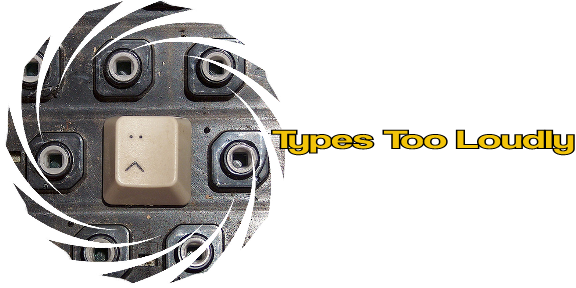As more topics are covered in this class I find myself wondering what others find so desirable about achieving the status of “poetic” for their creations. Ranging from the disaster of flarf to the more acceptable (though not as poetry) techno texts introduced this week, it is puzzling that poetry as it is commonly understood remains under constant assault. If something new is created, why must it fit into an older category? Furthermore, if one should claim that it doesn’t fit, why should that person be said to have “misunderstood” the “poem?” This whole practice both frustrates and annoys me. Take things as they are and leave them as they are. We should abandon this idiotic approach of attempting to force obscure constructions into pre-established patterns. In short, LEAVE GOOD POETRY ALONE!
***That slight mini-rant aside, I’m going to outwardly state for any of those who may read this particular post that I’ve been sick lately and admittedly I am making this post in a bit of haste. I’m perfectly aware that much of this post could be (and indeed ought to be) better justified and if such justification should be required by any reader feel free to comment and I’ll do my best to make revisions.
Anyway, to begin with the Anipoems by Ana María Uribe, I reiterate that I fail to see what can be called “poetic” about them. I could understand them being called a form of artwork or something done on the side for entertainment but certainly not poetry. What is poetic about having P’s become R’s as if to show exercise, multiple V’s becoming W’s in order to show a zipper? I mean, you could say that the letters are representing other things metaphorically, but that does not equate poetry. These “Anipoems” are forms of entertainment, perhaps an artistic rendering of individual letters but not a poetic one. Such techno texts should rather be considered as techno flipbooks or letter animation works of art, nothing more and nothing less.
Moving on, The Dreamlife of Letters by Brian Kim Stefans reminded me clearly of the kind of artwork which I do not understand, but acknowledge as someone’s decision to be visually creative. Another form of this sort would be ASCII art which takes letters and creates pictures or animations out of them. Many of these are quite impressive and can include color images or even, when viewed in rapid succession, clips from well-known movies. In this sense they could become, much like the Anipoems, techno flipbooks.
Finally, we come to Fields of Dream by Rachel Stevens and Nick Montfort which represents another kind of techno text. Fields of Dream, much like flarf, is something which proclaims to be “new” and “unique” when in reality it is nothing more than a child’s form of entertainment. It’s a mad lib, seriously, there is nothing new here. For those of you who for some reason may disagree, go to the Fields of Dream site and then go to www.elibs.com. You’ll note there is very little difference between the two websites.
As examples of techno text of which I am aware of on-line, I offer two links both related to star wars. The first is a rendition of star wars in the command prompt of windows XP and can be viewed at the following you tube links: part 1 part 2. The second is a rendition of star wars via on-line typewriter with sound and can be found here. Both of these examples, like all techno texts force the text as a material that has a higher degree of interaction than traditional texts. The first is very much like a flip book while the second could be more appropriately thought of as watching someone type each individual letter on a typewriter through the lens of a magnifying glass. Techno text exists as an art, as an entertainment, and certainly not as poetry in and of itself. It isn’t anything new, it’s not all that special, but it is there. That’s about all I have to say on the subject for now.
Subscribe to:
Post Comments (Atom)


Get well soon!
ReplyDelete